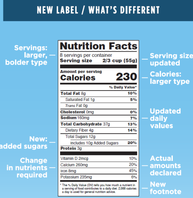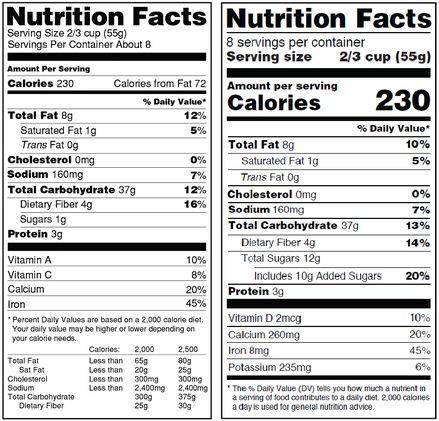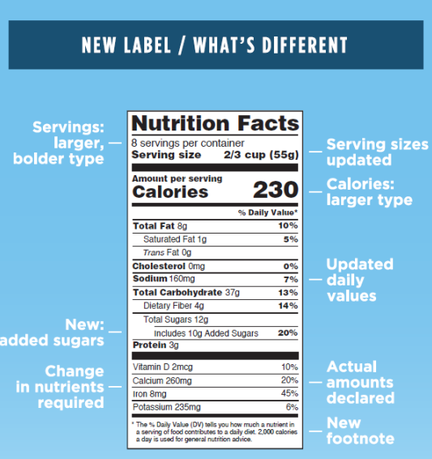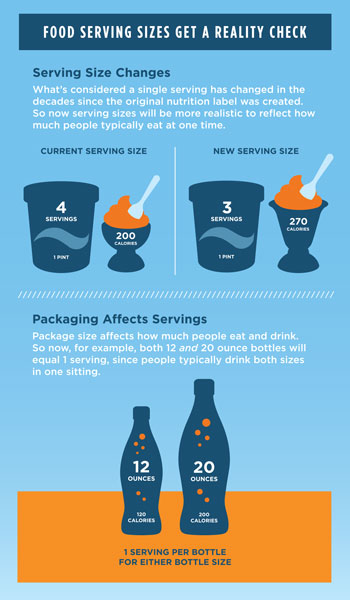 New Nutrition Labels Coming New Nutrition Labels Coming On May 27, 2016, the FDA published the final rules for the new Nutrition Facts label for packaged foods to reflect new scientific information, including the link between diet and chronic diseases such as obesity and heart disease. The new label will make it easier for consumers to make better informed food choices. The FDA set an initial compliance date for July 26, 2018, with an additional year to comply for manufacturers with annual food sales of less than $10 million. After those rules were finalized, industry and consumer groups provided the FDA with feedback regarding the compliance dates. However, on June 13, 2017, the FDA announced its intention to extend the compliance date for the Nutrition Facts Label final rules. The FDA will provide details of the extension through a Federal Register Notice at a later time. What's Changing on the Nutrition Labels? 1. Features a Refreshed Design
 2. Reflects Updated Information about Nutrition Science
 3. Updates Serving Sizes and Labeling Requirements for Certain Package Sizes
Leave a Reply. |
Archives
September 2018
Categories |



 RSS Feed
RSS Feed
